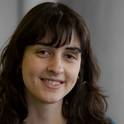
We consider versions of the grasshopper problem [1] on the circle and the sphere, which are relevant to Bell inequalities. For a circle of circumference 2π, we show that for unconstrained lawns of any length and arbitrary jump lengths, the supremum of the probability for the grasshopper’s jump to stay on the lawn is one. For antipodal lawns, which by definition contain precisely one of each pair of opposite points and have length π, we show this is true except when the jump length φ is of the form π p/q with p, q coprime and p odd. For these jump lengths we show the optimal probability is 1 − 1/q and construct optimal lawns. For a pair of antipodal lawns, we show that the optimal probability of jumping from one onto the other is 1 − 1/q for p, q coprime, p odd and q even, and one in all other cases. For an antipodal lawn on the sphere, it is known [2] that if φ = π/q, where q ∈ ℕ, then the optimal retention probability of 1 − 1/q for the grasshopper’s jump is provided by a hemispherical lawn. We show that in all other cases where 0 < φ < π/2, hemispherical lawns are not optimal, disproving the hemispherical colouring maximality hypotheses [2]. We discuss the implications for Bell experiments and related cryptographic tests.
This document was originally published in Proceedings of the Royal Society A: Mathematical, Physical and Engineering Sciences by Royal Society of Chemistry: RSC Publishing. Copyright restrictions may apply. doi: 10.1098/rspa.2020.0038
Available at: http://works.bepress.com/olga-goulko/19/
